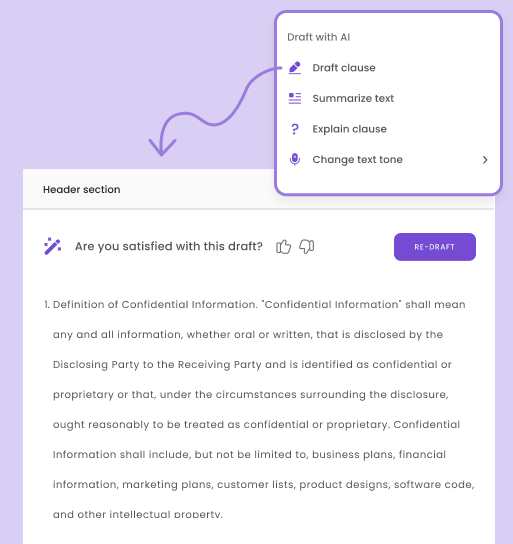When a business is young, processes are usually unheard of. It’s just a few people doing the work to the best of their ability.
As the business grows, more people are hired, more customers are purchasing, and things get more complex.
Clear processes need to be introduced. It allows new hires to get up to speed faster and ensures a consistent final product.
In this guide, you’ll learn about business process management. It covers the key components, the different methodologies, benefits it brings, and more.
Let’s dive in.
Key Components of BPM
Business Process Management (BPM) is a structured approach to analyzing, designing, executing, monitoring, and optimizing business processes. It overlaps with process engineering but has key differences, mainly related to scope.
It’s done to improve efficiency and hit strategic goals. Rather than treating processes as static procedures, you manage them as dynamic workflows that adapt to changing business needs.
BPM integrates technology, people, and data to ensure that business activities align with company objectives while minimizing inefficiencies and bottlenecks.
Let’s look at the different components.
Process Design
Effective BPM starts with process design. You define how work should flow across different departments and processes.
You map workflows to understand the order of tasks, potential bottlenecks, decision points, and interactions between employees, systems, and customers.
During the design and mapping process, you define or identify the stakeholders throughout the process so that each role within the process is clearly defined. This reduces and, in many cases, eliminates ambiguity within a process.
By thoroughly designing a process, you create a foundation for smooth execution and future optimization.
Process Modeling
After designing, processes should be modeled or simulated. This can be done using diagrams or tools purpose-built to visualize the structure of the process.
Business process modeling tools or flowcharts help you represent tasks, dependencies, and decision paths clearly.
This step enables you to identify redundancies, inefficiencies, or compliance gaps before actual implementation.
By modeling processes, you ensure a deeper understanding among all stakeholders and facilitate discussions on potential improvements.
Process Execution
If the modeling produces results you’re happy with, the next step is to implement the workflows in real-world situations.
Of course, you’ll want to do it on a smaller scale before rolling it out to your entire organization. Process execution can involve automation through BPM software, where repetitive tasks are handled by technology, or manual execution, where employees follow structured guidelines.
Whether you choose automation, human-driven workflows, or a combination of both, execution ensures that processes are carried out as intended.
Of course, you may need to make minor or significant changes to the workflow design but this is to be expected. Successful execution requires clear communication, proper training, and ongoing support to ensure adherence to the designed workflows.
Process Monitoring and Optimization
Once a process is in motion, you must monitor its performance using key metrics such as cycle time, error rates, and resource utilization. BPM platforms often provide dashboards and reports to help you analyze real-time data and identify deviations from expected outcomes.
Monitoring allows you to detect inefficiencies, ensure compliance, and make data-driven decisions. You can use the data from monitoring to optimize the process over time.
BPM is not a one-time effort but a cycle of continuous improvement. You optimize processes by analyzing performance data, gathering feedback, and implementing refinements.
Techniques such as Lean, Six Sigma, and process reengineering help you eliminate waste, enhance productivity, and improve customer satisfaction.
Optimization ensures that your business processes remain agile, scalable, and aligned with evolving goals, allowing you to maintain a competitive edge in a dynamic market.
BPM Methodologies
There are many methodologies or approaches to BPM. The one you choose will depend on many factors such as your goals, expertise available to you, the tools you plan on using, your budget, and more. Below are some of the more popular BPM methodologies.
Lean
Lean focuses on streamlining processes by eliminating waste and maximizing value for customers.
When you apply Lean principles to Business Process Management (BPM), you identify non-value-adding activities such as unnecessary steps, delays, or resource inefficiencies and work to remove them. This is where a lot of BPM is focused.
Lean methodologies, like Value Stream Mapping, help you visualize workflows and pinpoint areas of improvement.
By simplifying processes, reducing redundancies, and improving workflow efficiency, you enhance productivity while lowering operational costs.
Six Sigma
Six Sigma aims to reduce process variation and enhance quality by using a data-driven approach.
When implementing Six Sigma in BPM, you focus on defining, measuring, analyzing, improving, and controlling (DMAIC) processes to ensure consistency and minimize defects.
By gathering and analyzing performance data, you can identify root causes of inefficiencies and implement targeted improvements.
The goal is to maintain high-quality standards, reduce errors, and create predictable, repeatable business processes that meet customer expectations. This type of BPM is more prevalent in manufacturing where the produced products have little to no variation.
Agile BPM
Agile BPM emphasizes flexibility and responsiveness so you can keep up with evolving conditions. Unlike traditional BPM approaches that focus on rigid workflows, Agile BPM promotes iterative improvements through continuous feedback and collaboration.
By incorporating Agile principles, you can quickly modify processes, implement incremental changes, and respond to market shifts with minimal disruption.
This approach is particularly useful for dynamic industries where business requirements evolve rapidly, requiring adaptable and scalable process management strategies.
One of the prime examples of this are software companies that need to constantly innovate while keeping up with competition.
Total Quality Management (TQM)
Total Quality Management (TQM) integrates quality control into every aspect of your organization’s processes.
Unlike methodologies that focus on isolated process improvements, TQM ensures a company-wide commitment to quality by involving employees at all levels.
When you apply TQM in BPM, you emphasize customer satisfaction, continuous improvement, and proactive problem-solving. You develop a culture of quality and accountability and, by extension, sustainable processes that consistently meet or exceed industry standards.
Benefits of BPM
There are countless benefits associated with BPM. Some of them are minor, some are major, but all are worth it. Below is a selection of the more relevant benefits.
Increased Efficiency and Cost Savings
This is what most people think of when they consider BPM. Implementing Business Process Management (BPM) allows you to streamline workflows, reduce redundancies, and automate repetitive tasks.
Together, you unlock significant efficiency gains. You minimize wasted time and effort, ultimately reducing operational costs.
BPM also helps you allocate human and technological resources more effectively. As a result, work is completed faster and with fewer errors. Over time, these improvements lead to sustainable cost savings and a more productive business environment.
Improved Compliance and Risk Management
BPM enhances compliance by standardizing processes and ensuring business operations align with regulatory requirements.
Clearly defined workflows, roles, and responsibilities, reduce the risk of errors, fraud, and non-compliance issues.
BPM tools also provide audit trails and documentation, making it easier to demonstrate compliance with industry regulations and avoid contractual risks. Additionally, risk management improves as you gain better visibility into potential vulnerabilities, allowing you to proactively address them before they escalate.
Better Customer Experience and Satisfaction
Optimized processes lead to faster service delivery, fewer errors, and a more seamless customer experience.
When your internal workflows run smoothly, customers receive more consistent and higher-quality service.
BPM enables you to identify and eliminate pain points in customer interactions, ensuring that their needs are met efficiently.
Through multiple areas like improved order processing, quicker response times, or enhanced service quality, BPM helps you build stronger relationships with customers and increase overall satisfaction.
Challenges in BPM Implementation
Resistance to Change
One of the biggest hurdles in Business Process Management (BPM) implementation is resistance to change.
Employees may be hesitant to adopt new workflows, fearing increased workload, job displacement, or disruptions to their routines.
Overcoming this resistance requires clear communication about the benefits of BPM, active involvement of stakeholders in process design, and ongoing training.
When you address concerns early and demonstrate how BPM improves efficiency without making jobs more complicated, you increase adoption and engagement.
Integration with Legacy Systems
Many organizations struggle with integrating BPM solutions into existing legacy systems. Older technologies may lack the flexibility to support modern BPM platforms, leading to compatibility issues, data silos, or workflow disruptions.
To overcome this, you need a well-planned integration strategy that includes middleware solutions, API connectivity, or phased rollouts.
Choosing BPM tools that support seamless integration and gradually modernizing outdated systems ensures smoother transitions without halting business operations.
Measuring ROI and Success Metrics
Determining the return on investment (ROI) of BPM can be challenging, especially when improvements are gradual or qualitative.
While efficiency gains and cost reductions are measurable, factors like employee satisfaction, process agility, and customer experience improvements may be harder to quantify. Even if you quantify them, it may be indirectly.
To track success, you need clear key performance indicators (KPIs) such as cycle time reduction, error rate decreases, and compliance adherence. Establishing baseline metrics before BPM implementation allows you to measure progress and justify investments.
Maintaining Process Consistency Across Teams
Process consistency across multiple teams, departments, or locations can be difficult, especially in large organizations.
Different teams may interpret workflows differently, leading to variations that undermine efficiency and compliance.
Standardized documentation, training programs, and automation tools help you enforce consistency. Regular audits, process reviews, and collaboration across departments ensure that workflows remain aligned with business goals while allowing some flexibility for localized adaptations when necessary.
Conclusion
BPM is an essential part of a growing business. It’ll allow you to expand without carrying a lot of dead weight along the way. With that being said, it requires a considerable investment over time. That investment comes in many forms such as time, resources, and manpower.
This guide has shown you the benefits, the types, and even the challenges associated with BPM. It’s up to you to decide how you’d like to approach it.
Let me know what you think in the comments, and don’t forget to share.




